




















education@nasen.org.uk






















education@nasen.org.uk
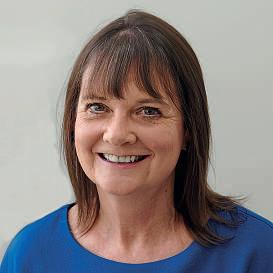
Afocus on what stands out, for all the right reasons. Aspotlight on practice from across the UK and internationally,role models for inclusion. Back in October,the sixth nasen Awards concluded with an evening of celebration. An annual highlight in the nasen calendar,this year the celebration event was held regionally,inBirmingham, the first one outside London. The evening was the culmination of many months of coordination, assessing all the nominations we received for 16 awards, and we appreciate the dedication of the independent judges who spent summer weeks reviewing those shortlisted.
Iamdelighted with the kindness of social media. Our thanks go to you, our 70,000 members and other supporters, for lifting the mood and sharing the moment. The countless messages of congratulations for the winners, individuals and organisations, amplified those examples of practice. Iwould like to encourage you all to continue to share those with your networks. This edition of Connect magazine shines awell-deserved spotlight on the award winners.
In our 30th Anniversaryyear of nasen, aLifetime Contribution award was presented to Alex Griffiths, who served as atrustee and member of nasen throughout that 30-year history.
Addressing the financial barrier to nasen membership, removing amembership fee, was abig decision for nasen. Previously,membership subscriptions provided essential income, enabling production of this nasen Connect magazine, for example. This makes sponsorship and donations even more crucial. Iamdelighted to say that supportfor nasen Awards 2022 was fantastic, with sponsorship for each award categoryand the event itself. Do look out for more information on the nasen website or follow us on Twitterand LinkedIn as we will continue to share the practice while taking an opportunity to say ‘thank you’ to all.
This edition is usually apopular one as it features the nasen digest of the annual SEND data. It would be wonderful to hear that nasen Connect reaches everyschool, college and setting, can you play apartinsharing this edition with others?
Tel: 01827 311500 Fax: 01827313005
Email: education@nasen.org.uk
Designed by: Headlines Partnership Publishing, 4MilnyardSquare, Bakewell Road, Orton Southgate, Peterborough, England, PE26GX Email: info@headlinespp.uk.com www.headlines.uk.com
Advertisingenquiries: nasen House Tel: 01827311500 Email: sales@nasen.org.uk
Editorial enquiries: nasen House Tel: 01827 311500 Email: education@nasen.org.uk ©nasen. Allrights reserved.
No part of this publication may be copied or reproduced, stored in aretrievalsystem or transmitted
www.nasen.org.uk
in anyformorbyany meanselectronic, mechanical, photocopy, recordingor otherwisewithout the prior permission of nasen.
While everycarehas been taken in the compilation of this publication, nasen cannot accept responsibility forany inaccuracies or changes since compilation, or forconsequential loss arising from such changes or inaccuracies, or forany otherloss, direct or consequential, arising in connection with information in this publication. The views herein arenot
necessarily those of the editor or nasen. Acceptance of advertisements does not imply recommendation by nasen. Not all photographs in nasen depict children with special educational needs. Many of the photographs aretaken in integrated classes. nasen would liketothank all those who have contributed photographs.
RegisteredCharity No. 1007023 RegisteredCompany,limited by guarantee, No. 2674379 (England andWales)
Iamdelighted with the kindness of social media. Our thanks go to you, our 70,000 members and othersupporters, for lifting the mood andsharing the moment.
Johanna Aiyathurai argues that relationships and sex education (RSE) needs to be prioritised for pupils with SEND.

Bi-Borough How the Royal Borough of Kensington and Chelsea, and WestminsterCity Council have adopted acollaborative approach to drive transformation.
Miriam McBreen discusses some of the methods teachers can use to boost engagement.
Connection, disconnection and digitalwellbeing
In aworld of ever-increasing digital conection, it is crucial for educators to be able to ‘switch off’,says Lisa Blackett.
Allabout thedata Zoe Mather takes alook at the latest SEND data and considers some of the questions we need to ask, as well as what we can do as aresult.

Miriam Walker looks at the benefits of having such an environment.
Mandy Wilding discusses the importance of identifying SEN, examines the role of the SENCO and key person and outlines some effective strategies and supportfor settings.
Medicine optimisation in schools Is pharmacy partofthe solution to a collaborative health and education service deliverymodel for children and young people in special schools? Nirusha Govender discusses.





















We’re delighted to open this month with the exciting announcement of the launch of our partnership with Rockerbox News.
As nasen’slatest headline sponsor,Rockerbox News will work collaboratively alongside us to promote good practice through the networks of schools, academies, practitioners, and all other organisations involved in the deliveryofeducation of children and young people with special educational needs.
To celebrate this new partnership, Rockerbox News is proudly offering members of nasen free and unlimited access to their online non-fiction reading comprehension platforms throughout November in celebration
of National Non-Fiction month. If you haven’tyet signed up, you can do so by visiting the following link: http://ow.ly/eK2Y50LnKeQ)
We are also proud to announce that that nasen LIVE will returntothe Vox Conference Centre in Birmingham on 7July,2023! We know that many members thoroughly enjoyed 2022’s event and are eager to secure tickets for next year’sshow.Early release tickets are NOW available and we have 100 tickets at areduced rateof£79. Get yours today,at https://www.nasen.org.uk/nasenlive-2023
If your setting requires some more immediate support, then our exclusive members’ area will provide you with access to our online repositoryof
(from the September 2022 edition of the British Journal of Special Education)
By: Julia Lindley-Baker and Laura Mills.This article reports on apiece of action research conducted witha class of ten neuro- andphysically- diverse pupils, agedfive to eight,whichaimedtoidentify an original and comprehensive wholeschoolapproach to teaching communication skills.
An innovative structuredteachingapproach,includingvideo modelling,was devised –Total Augmented Language andKey Skills (T.A.L.K.S).Using playasthe medium to measure children’s progress, impactsofspecific interventions were evaluated.
Diagnosis and evaluations were supported by formal assessments of communication competence, completed at the startofthe research. Three communication checklists were used. Progress was measured against these at each review stage of the three cycles, with results categorised as pre-verbal, limited speech or developing speech.
Towardsthe endofeach cycle, five-minutevideo recordings (VRs) were taken, everyhalf hour, overone school daytocapture
resources. Enjoy access to arange of complimentarySEND resources and tools, which are rooted in research and evidence-informed best practice. Take alook today: https://www.nasen.org.uk/resources
And finally,why nottake afew moments to recap on the 2022 nasen Awards Ceremony,which took place on 14 October at the Grand Hotel, Birmingham? We greatly value the overwhelmingly positive feedback that we have received for this celebration of SEND and invite you to find out more about our winners here: https://www.nasen.org.uk/awards
Kind Regards, The Membership Team
the childrenatplay.Eachseriesof12VRs from eachcycle were analysedtoidentify the percentage time each child engaged with different typesofplay.
Thisresearchdemonstratedthatincreasing spontaneous interactions and communicationcan evolve through individually structured routines promoted through play Building communication competence throughlearning to play requiresnurturing relationships between peers andstaff alongside building familiarity with selected resources to promote free choice. Transitioning to ‘free, unstructured’ activities demands re-framing staffroles and adjustmentsfromdirecting to guiding Opportunities to form workingrelationships with each other as ateamand with children, needtobefosteredfirst.
In addition, this researchidentified that when children become engaged in play,classroomanxietiesreduceand spontaneous communication increases.
The results of this research also indicate that to achieve inclusive practiceand provideopportunities which enable childrentoreach theirfullpotential, aconnected and creative ‘T.A.L.K.S’approach is worth exploring.Inparticular,the video modelling element of T.A.L.K.S offers innovative practice in developingcommunication
Finally,itisimportant to notethat this research aidedrewriting both theschool communication curriculum andcommunication policy. Continuing ProfessionalDevelopment (CPD) was written on ‘play’ and was shared with all staffasthe medium to assess spontaneity in communication andinteraction in learners.
Iwanted to say abig thank youfor contacting my school with regards to taking part in a research project. We have thoroughly enjoyed thetraining and delivering the Social and Emotional Literacy(SEL) programme to our students as part of the research. Our students havebenefited alot from the programme and it wasgreat that we were givenall of the resources forfree, and paid fortaking part! Areal bonus in these cash-strapped times. Assistant headteacher,Warwick
Editor: Thanks for the feedback. We often have project c sthat require students, teachers, parents or whole school recruitment. We aresogladyou havefound it beneficial and that the programme was useful to your students. If any other readers areinterested in being added to our list of providers willing to be contact c ed with aview to being involved in external project c s, please follow the link and we will add you to our database.
Thank yousomuch forsuchaninspirationalevening that wasthe nasenAwards. AlthoughI did not wininmycategory,the night wasa real boosttomyprofessionalself-esteem andgave me theopportunity to engagewith fellowprofessionals(as well as havinga greattime). It also gavemeachancetomeetthe nasenteamand Ilookforward to engaging moreinthe futureand recommending nasen to all my fellow SENadvocates. Shortlisted nominee
Editor: It was our pleasureto meet all thefinalistsand we agreethatitwas a fantastic night. The awards remind us how importantour role is in providingrole models for others.See pages eightand nine for the double spread of the evening at the new awards venueinBirmingham.
Ireallythought thatfollowing the pandemic and the experience of schools with online learning and technology,wewould see ashift in thinking to be more innovative, to enable more bespoke access to learning and the integration of this learning into everyday practice. This does not appear to be the case and education has returned to the way of learning that was first brought in during the first free to access schools. The rise in school avoidance, the increased disadvantage gap, the increasing identification of SEN, all seem to be driven by this ‘one-size-fits-all’ approach to curriculum and academia in general.
Retired headteacher,Rotherham






Editor: We feel your frustration andwhile there were anumber of positives during thepandemicand schoolclosures, including the magnificentway that schools
showed their adaptability andresolve tosupport pupils, thereweresome large negatives. PupilswithSEN were especially disadvantaged andmanystruggled to access education and otherprovision We at nasencontinue to advocate for access to technologyfor pupilswithin schools, as alife skill and part of the duty of preparation for adulthood.Inclusion by design, alsothe theme of our recent nasen Live conference,isthe real key to starting to change the way we approach education andthe needsofthe pupils. We will continue workingand pushing for change throughour involvementwith government and other organisations.
If you areinterested in more involvement with our mission, pleasecontact usas we redevelopour memberforums.















































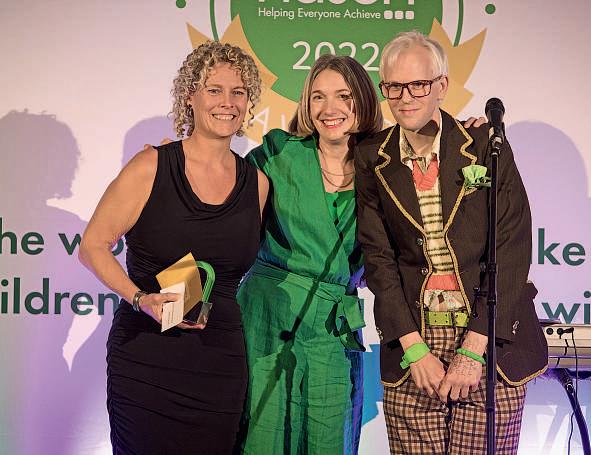
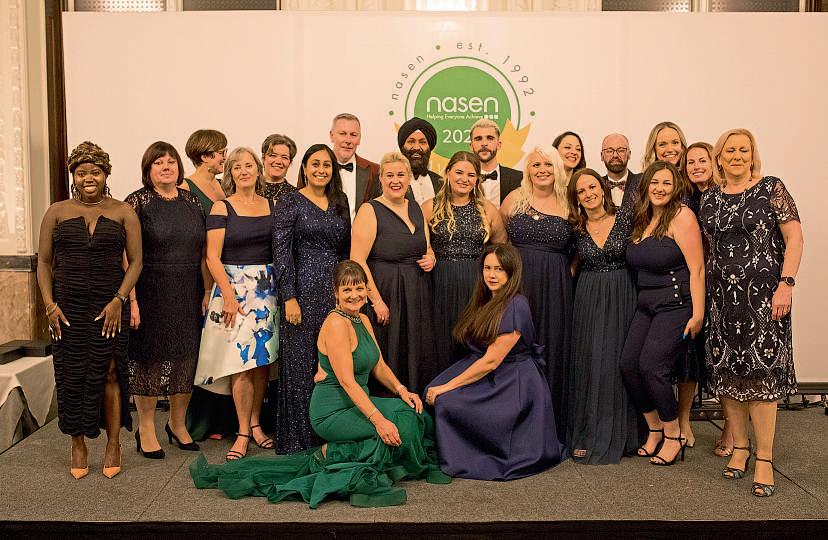
The celebrated winners of our sixth annual Awards were revealed, in a sparkling event at The Grand Hotel, Birmingham on Friday 14 October Altogether, 18 individuals, schools and organisations scooped national accolades for theirremarkable work to help children and young peoplewith special educational needs and/or disabilities (SEND) and learning differences thrive and achieve, both in the UK and across the globe
This year ’ s inspiring winners included a Multi Academy Trust whose pioneering robotic project links medically ill children with their lessons, a teacher who has worked tirelessly to make her school fully accessible for pupils with SEND whilst boosting results, and an island school off the coast of Nigeria changing the way SEND is seen in the local community
Theceremony was hosted by comedian and 2018 Britain’s Got Talent finalist, Robert White, and supported by headline sponsor, Scanning Pens, and media partner,Schools Week.
nasen ʼsAward forEarly Years Provision, sponsored by NurseryWorld


Kids Planet SEND Team SEND to Learn, Northumberland


nasen ʼsAward forPrimaryProvision, sponsored by IDL Westlea School, Wiltshire
nasen ʼsAward forSecondaryProvision, sponsored by Texthelp
Supportive Education Department Upton-by-Chester High School, Cheshire
nasen ʼsAward for16-25 Provision, sponsored by Education and Training Foundation (ETF) Harrison College,South Yorkshire
nasen ʼsAward forSpecialist Provision, sponsored by Christie &Co




nasen ʼsAward forCo-production withFamilies, sponsored by The Seashell Trust



















Moon Hall School, Reigate,Surrey
LincolnshireYoung Voices
nasen ʼsAward forYoung Person Aged 16 and under,sponsored by Senploy AshleyWebber,Lincolnshire





nasen ʼsAward forYoung Person Aged 17-25, sponsored by Seashell Trust







nasen ʼsAward forSENDLeader, sponsored by National Education Union

nasen ʼsAward forLearningSupportStaff Member, sponsored by Axcis Education
nasen ʼsAward forTeacher of theYear, sponsored by SENDCast
nasen ʼsAward forTechnology, sponsored by Scanning Pens

nasen Awardfor Teacher Development in Digital Accessibility,sponsored by Microsoft
Joshua Earnshaw-Potts, Essex FaizanSheikh, Greater Manchester
Pearl Barnes, Somerset
Patricia Hetherington, West Yorkshire
Jemini Patel, London
Yorkshire
SkylarkPartnership AV1Project, Northamptonshire

ject,
Oldham College, Greater Manchester
nasen ʼsAward forPublication (David Ryan), sponsored by Concero SENDcast
nasen ʼsAward forInternational Provision, sponsored by ICEPeurope
RA InternationalSchool, Bonny Island, Nigeria
nasen ʼsAward forPerson of theYear, sponsored by RockerboxNews PhilippaStobbs



More primary school pupils will benefit from high quality phonics and expert literacy teaching as part of new funding announced on 9 October Over £24 million is set to be invested in building children’s literacy skills as the Government



















continues to support pupils’ recovery from the pandemic and work towards the target of 90 per cent of primary children reaching the expected standard in literacy and numeracy The announcement marked the conclusion of Dyslexia Awareness Week, with targeted literacy support playing a pivotal role in




helping pupils with dyslexia develop all important reading and writing skills
The investment is part of the Government’s commitment to make sure every young person leaves school with a strong grasp of literacy and maths and sits alongside further targeted support such as the National Tutoring Programme
Then Education Secretary Kit Malthouse said: “If any child leaves schools without the ability to read and write properly, we have failed them It is imperative that we support schools and pupils following the disruption of the pandemic This funding will help us do that, but also help to instil a love of reading in young people that can last throughout their education and beyond ”
The funding will support the continuation and growth of the English Hubs Programme, enabling even more schools to embed high quality phonics teaching and benefit from the intensive support and access to literacy specialists
To read the full press release go to: https://bit.ly/3ekZZqN
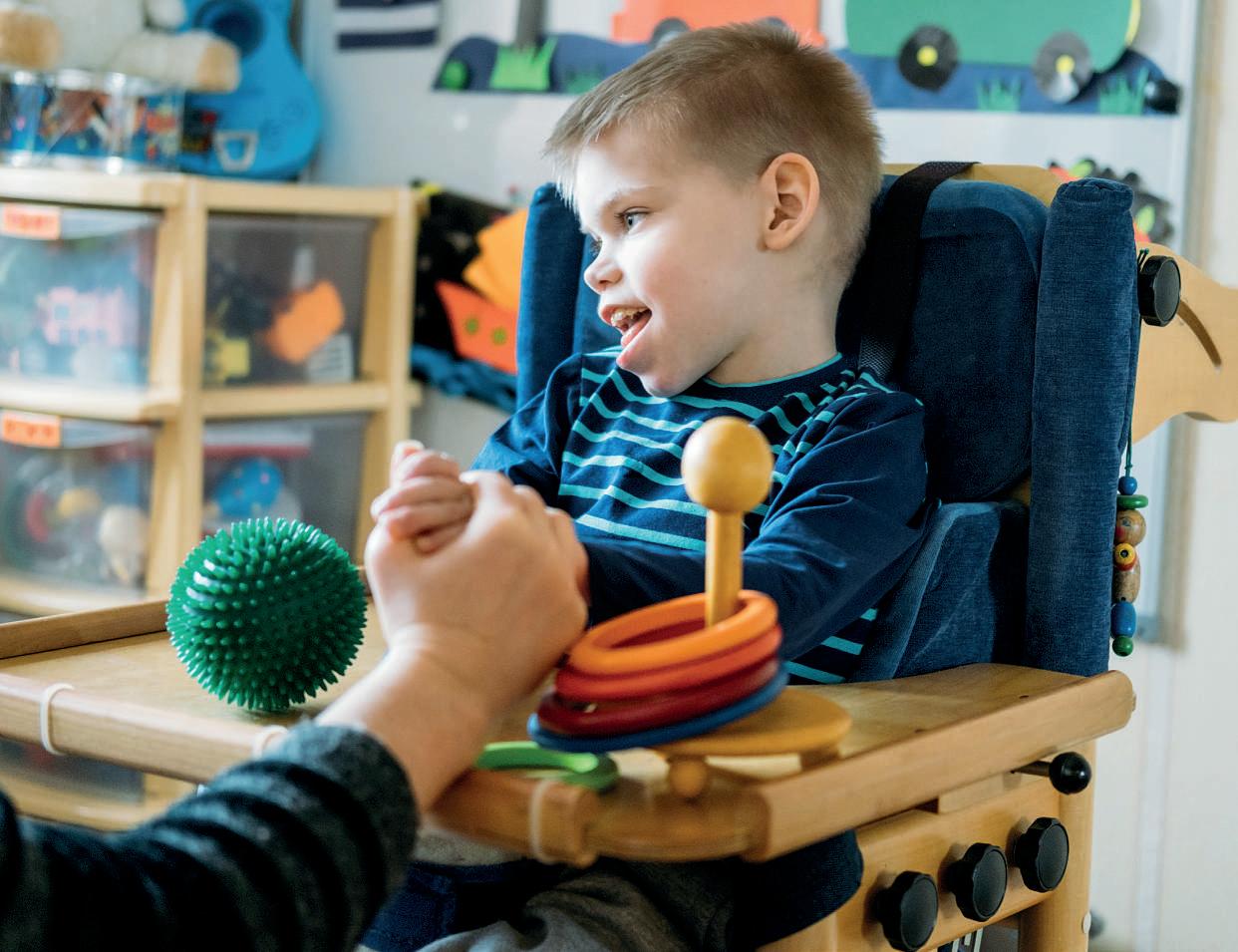

The Council forDisabled Children (CDC) has designed asystems checklist and audit tool that supports local areas with aframework for assessing their progress towards effectivejoint working. The purpose of this tool is to support joint working between Local Authorities and health partners. It pulls together the key pieces of evidence that the local area will wish to assurethemselves on and provides ahigh-leveloverviewofits progress. The sections aredivided into the fivekey areasofthe role of alocal area supporting children with SEND.

To access the checklist: https://bit.ly/3rM8E8x
In 2022, 14 per cent of pupils in year 1had a special educationalneed (SEN). SEN pupilseither haveanEducation,Healthand Care plan or receiveSEN support. In 2022, 3per cent of pupils in year1had an Education, Health and Care plan and 11 per cent were on SENsupport.
In 2022, 38 per cent of pupils with SENmet theexpected standard in thephonics screening checkinyear1.Amongpupils with SEN, 44 per cent of those on SENsupportand 19 percentofthose with an Education, Health andCare plan metthe expected standard.
For the full reportgoto: https://bit.ly/3enCIUU
Researchers at UniversityCollege London (UCL) are starting aresearch project across England in which they will examine reading development in deaf children from when they startinReception to Year 2. They will examine the role of visual language (speechreading &BSL) in this development. The aim is to help resolve some unanswered questions about the trajectory of reading development in deaf children. They are looking for awide range of deaf children to be involved –those who use BSL and those who do not. They arelooking fordeafchildren to participatewho meet the following criteria: will be in Reception in the school year 2022/23 were diagnosed as severely or profoundly deaf beforethe age of three havelived in the UK foratleast the last six months havenodisabilities that would prevent them from completing 30 minutes of tasks on acomputer
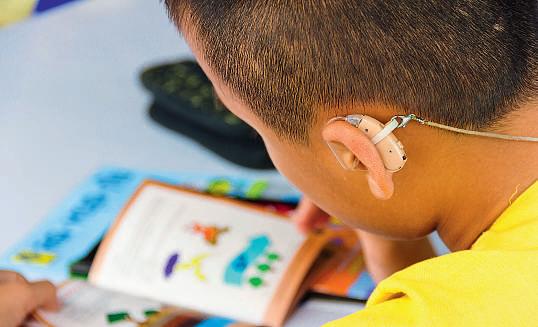



Thestatutory guidance for schools and colleges, ‘Keeping Children Safe in Education 2022’, has been updated and came into force on 1September 2022.The Anti-bullying Alliance has written an article outlining how this guidance relates to bullying, and how these points substantively differ from the previous 2021 guidance.
Significant changes include: Paragraphs 82-93 –added clarification to paragraphs regarding the Human Rights Act1998, the Equality Act2010, and the Public Sector Equality Duty Paragraph 93 has the addition of the line, “some pupils or students may be moreatrisk of harm from specific issues such as sexual violence, homophobic, biphobic or transphobic bullying or racial discrimination.”
Paragraphs 202-204 –extended the information about schools and colleges ensuring children who may be LGBT haveatrusted adult who theycan be open with.Thisincludes paragraph 204 which states: “LGBT inclusion is part of the statutory ‘Relationships Education, Relationship and SexEducation and Health Education’ curriculum and thereisa range of support available to help schools counter homophobic,
biphobic and transphobic bullying and abuse.” Paragraph 465 –the addition of the bullet point: “The Anti-Bullying Alliance has developed guidance forschools about Sexual and sexist bullying.” Paragraph 468 –added paragraph to highlight the importance of ensuring children understand the law on child-on-child abuse is theretoprotect them rather than criminalise them. As child-on-child abuse is likely to involvebullying, this addition is relevant forbullying.
To read the full article go to: https://bit.ly/3g249Ea
The AnnaFreud National Centrefor Children and Families has just published abrand-new resource forschoolsand colleges about emotionally based schoolavoidance (EBSA)
The resource introduces the topic,exploressome of thepotential risk factors, and providesstrategies and tips to help education stafftackle the issue.

To download thisresource,visit: https://bit.ly/3MqPoqH
Speech and Language UK (formally ICAN) has published anew reportasteachers now estimate that ashocking1.7 millionchildren in the UK are behind in talking and understanding words. They say that:
Without the right support, children with challenges in talking and understanding words face huge hurdles in learning to read and write, as well as across the curriculum. Theywill also
face difficulties with making friends, staying in good mental health and in the futuregetting and holding down jobs.
Supporting children with speech and language challenges should be as much of apriority as literacyand numeracy. Yetwhile successive governments haveinvested in literacyand numeracy, theyhavecontinually overlooked this fundamental area and as many as 70 per cent of teachers say that the Government has not prioritised this issue.
To help prevent speech and language challenges and to identify issues as early as possible, support forearly language development needs to become front and centreofthe offerbythe newFamily Hubs. Schools need moresupport to identify who is struggling. Anew tracking tool should be developed and made freely available so that schools understand the speech and language challenges of their children and who needs support.
Incentives also need to be put into the system to ensurethat provision of support forchildrenwith speech and language challenges is prioritised. This includes reviewing the Ofsted framework so that schools arejudgedonhow they help children who arebehind in their talking and understanding of words.

The Department of Health and Social Care (DHSC) needs to prioritise planning and investment in the Speech and Language Therapist workforcesothat specialist support is available to children who need this.
website address: https://speechandlanguage.org.uk/ Follow them on Twitterand Facebook at @SpeechAndLangUK
To read the reportgoto: https://bit.ly/3gcWKST
NEW RESOURCE FROMTHE ANNA FREUD NATIONAL CENTRE FOR CHILDREN AND FAMILIES: ‘Addressing Emotionally-based



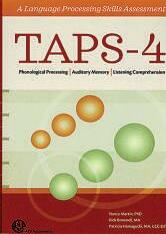

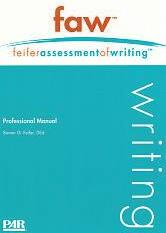



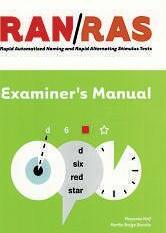

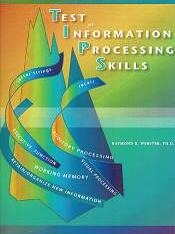



Johanna Aiyathurai argues that relationships and sexeducation (RSE) needs to be prioritised forpupils with SEND as it provides the foundation blocksfor greater independence and healthy relationships.








oung people with additional needs are often put into oneoftwo camps; either theyare portrayed as ‘over-sexed’, displayingoverly sexual andsocially inappropriate behaviour,ortheir sexualityisdismissed entirelyand notconsidered at all. It’s time to stop generalising and stereotyping andgiveyoung peoplewithSEND an inclusive sexeducation at school.
While it’sa requirement to teach the new RSE curriculum to secondaryschoolstudents, it is often alow priorityfor pupils with SEND. Not enough time is allocated to it, and it isn’t differentiated to meet their individual needs.
Other subjects cantakeover,and finding the time and resources creates arealbarrier to effective teaching and generalisation
of vitalcoreskills. Having SEND does not stop the torrent of hormones and emotions thatcomewithpuberty,itdoesn’tchange thefears thatcomewithmenstruation, feelings of attraction and changes to their body.Young people withadditionalneeds remain sexual beings with the same desires, frustrations andfeelingsasother teenagers What is different is theirabilitytoprocess thesechanges. That’swhy Ibelieve teaching about relationships,behaviour,personal safety,bodies and healthshould be at the heartofevery youngperson’s curriculum. Whatindependencewill look like will be apersonaljourney butbyteachingthe underlying skills andknowledge of social rules and behavioursweare givingeach youngpersonthe best foundation in life.RSE is keyinteaching vital socialskillsthatare needed beyondschoolasyoung people go
Johanna Aiyathurai is the CEO of Learn and Thrive, anew charity which empowers learners with Down’s syndrome and other learning needs, through digital learning tools and video resources.







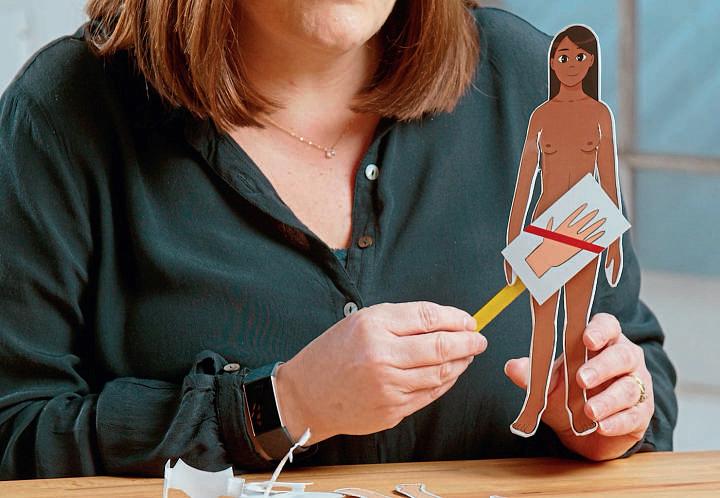





into college, workplaces, local communities andformfriendship groupsand relationships.


Learnand Thrive is acharitytaking action to provide free qualitydifferentiated RSE resources for schools and parents. The charityhas launched anew teaching video and resource series called Learning for Life which covers key early skills from the current RSE curriculum. It delivers teaching alongside differentiated worksheets allowing learners to access the content at four different levels. Included in the packs are the appropriate Widget symbols for those learners that need even further differentiation.

Theformat is designed with pupils with SEND in mind, it consists of ten short videos (less than ten minutes each) with an

accompanying resource pack. The pace can be suited to the individual student and the videos can be revisited time and again as needed to embed the learning.
The biggest challenge withthe RSE curriculum is the vast and general topics it covers that requiresomelevel of basic understanding ofthe core concepts of the body, privacyand healthyrelationships. Being able to provide gooddifferentiation in this subject is key to ensuring the conceptsand learningget embedded.
We have workedcloselywith specialistteachingservice, Inclusively Down, to plan and producethisvideo
series.Its founders, Lucy Clark and Julie Knight, have taughtyoungpeople with special needs forover20yearsand knowfirst-hand how these concepts need carefulconsiderationinthe classroom.
Lucyexplains. “Theway you differentiate asubjectisalwaysveryimportant,but itis especiallysowithRSE. When we looked at therecentlyrevised curriculum, we had to stop and consider what ourchildren needtounderstandfirst to underpin this.
“Forus, getting the foundations right in any subject means the learningcan be built in the right way and good progressfacilitated Ultimately,the goalisthatthe learningis retained and canthen be appliedand used practicallyinday-to-day life,impacting on all areasincludingfuture employment
“Thechallenge withRSE is the complexity of some of the topics and the many nuanced andgreyareas. Forexample,ifyou areto get apupil to understand that hugging family is ok,but notsomeone you’ve justmet at the busstop, then you need to ensure they haveunderstoodthe keyconceptsofwhat appropriatetouch is and howtoapply this.”
www.nasen.org.uk
Having SEND does not stop the torrent of hormones and emotions that come with puberty, it doesn’t change the fears that come with menstruation, feelings of attraction and changes to their body
Don’t look at other people when they are getting changed
bathroom dressing gown
Public and Private Places
We All Need Privacy
My Body –IAmA Girl
My Body –IAmA Boy
Publicand PrivateActivities
Appropriate Touch

It’sMyBody
There are three videosand resource packs in the seriesthat cover the topic of public and private. The first dealswith the conceptofrooms and activities that might be public orprivateand howyou know thedifference,suchaswhether you areonyourown andthe door is shut or if there are lots of otherpeople around.














We know that children withSEND don’t necessarily pick up on behaviours thattheir peers mightthrough inference,suchashow to appropriately getchangedfor PE around others.Therefore,itwas important to clearly outline public and privatebehaviourswhen starting this teaching series.

Twoofthe videosfocus on the body and we know that explicitteachingabout private body parts is vital to keepour young people safe,aswellasbuilding thenecessary social interaction skills neededtoaccessthe wider communitylater inlife.Does thepupil have agood understanding of all body parts before we go on to teach about private body parts? Do they really understandthe concept of privacy and keepingthemselves safe?Have we built the foundations needed forthose youngpeople to go on and access thewider curriculum?


Pupils can easily find themselves in hot water for arange of inappropriate behaviours; undressing inappropriately in apublic place, inappropriatetouch,andmuchmore.Oftenthey simply don’tunderstandthe social rules and norms that their peers learnthrough inference.
If taught well,RSE can supportour young people to avoidthese situations and learnthe skills that willsupporttheir
www.learnandthrive.org.uk/learning-for-life www.facebook.com/learnandthriveuk twitter.com/_LearnAndThrive


Our resourcesfocus on the concepts of public,private andthe body, covering the foundationsofappropriatetouch and boundaries. We cover thedifference in touch betweenactivities such as hugging, comforting and playing tag. We go into detail about which areas of thebody it is appropriateto touchand importantly what to do if someone is invading their personal space or privacysothatwecan empower our young people to keep themselvessafe.
We have includedvariedresources and symbols to accompany thevideos. They provide clear and practical downloadable resources to help build on these topics, making them easy for teachers and families to access quickly and easily Teaming up with Widget, our resources include symbols making them easily accessible to awide range of levels of need.
The first series covers topics from the ‘Being Safe’area of the RSE curriculum, but thenextseries,alreadyinproduction, looks at emotions, with further content covering sexuality,puberty, difference and much more planned forthe future. All completely free to access






The RoyalBoroughof Kensingtonand Chelsea, andWestminster City t Council initially began sharing children’sservices in 2011. At this stage, we were partofatri-borough with Hammersmithand Fulham too; aproject which cameto an endin2018 when we swiftlybecameabi-borough andwere able to pushforwardand lead change at scale and pace.
In recentyears, therapidly increasing numberofchildrenneeding SEND support, the need forearlieridentification and interventions, andthe risingdemandsand expectations placedoncouncil SEND services, hasseenlocal authorities having torethink delivery models. This iswhere our bi-boroughhas takena uniqueapproach; although many councilsshare services, few were sharingchildren’sservices.


Today,ourbi-borough supports morethan2,000 children and young people aged 0-25 with special education needs and/or disabilities in partnership with families, schools, health professionals, social care, and other services.
Both boroughs work from ashared office in Kensington Town Hall, with asignificant partof our work undertaken remotely.Our leadership team operates as abi-borough while the service is delivered as individual boroughs –effectively it is delivered within the framework governance of the local authority where the child lives.
Through taking thisapproach,weare ina strongposition to learn fromeach other and share best practicetoserve our communities in thebestway possible.















To supportthechange and enablequick decision-making, we knew acomprehensive technology solution was needed and in


2018 our bi-borough implemented adigital case management solution, ECLIPSE from OLM L Systems.
Investment in theright resources, thatwill evolve withour service,isessential to strengthen performance, andinnovative technologiesplay akey role asautomating tasksspeeds up the process for everyone.
At the beginning, we wantedtoensureeveryone knew that it was not an IT project, but adigital transformation project. Buy-in from both authorities was fundamental to success and asteering group was created to see it through. Built on an ethos of truth,trust and teamwork from peopleacross both local authorities, and from our solution provider, we delivered astrong,successful programme.
We have alsocreated threefully integrated SEND teams madeupof staff from both boroughs; onedeals with new assessment requests; anotherisresponsible fordelivery once theEHCPisinplace; anda third team manages areassuch as transportationand mediation










By engagingwith everyindividual within the service throughworkshops andfocus groups, we built an understanding of the current capabilities of the SEND service, andwhere thegaps were.Onreflection, this vital work informed the baseline positionand definedthe scopeand strategy for transformation.











Therewere various reasons why technology was needed to supportourjourney It was not solely the national challenges faced; internally there were challenges to tackle too, and we knew that technology could transform and simplify our services.
It’snot unusualfor SENDteams to be using antiquated systems that are decades


Julie Ely is assistant director for SEN at Westminster and Kensington and Chelsea Council.
Prior to joining the Bi-borough in 2018, Julie led the largest County SEN Service. She is aTrustee of aspecialist post-16 college for young people with SEMH needs.
old and can no longerfully supportthe current SEND process. Equally, manually driven recording methods are still used with hard copies stored in floor to-ceiling filingcabinets.
Before the programme, ourown data management andreporting were largely manual andtimeintensive,which created repercussions forstaff,children, andtheir families.Multiplesystems meantthat sharing data wasslow and convoluted This needed improvingto enableSEN case workers more timewith children, young people, andtheir families,and to improve data access to better support their needs Adigital strategy wastherefore implemented to improve service delivery and replace multiple legacy systems. Today wecan recordand access over one thousand datapointsona child or young person, enabling integrated case recording. Thisincludes caseprofile, primaryneed data, financialinformation, attendancedata and progress againstoutcomes.
Families no longer repeat their storytime and time again, as the history, plan and status of each case is visible in one place for any member of stafftoaccess immediately






In fact, this was one of the key drivers. We listened toour staffand thefamilies who expressed annoyance over the old
















OUR AIM WASFOR ONE SERVICE ACROSS TWO BOROUGHS, USING ONE SYSTEM, WITH AVISION TO BE THE NUMBER ONE SEND SERVICE IN THE COUNTRY.


processes and having to sharethe same information many times. For families it was frustrating and equally so for staffwho,asa result, were spending too muchtime on adminrelated tasks rather than utilisingtheir skills and expertise to supportchildren and families

Thefeedbacksincefrom staff and families hasbeenincredible, and staff aremore confident in theirroles as theyhave the right tools to support them;they canaccess the rightinformation at theright time







Forinstance,now whenstafftravel to see clients, they canproduce EHCPsquicklyand securelywithinthe casefile,tracking changes in alive record; theydonot needtowaituntil they returntothe officetoupdatenotes.



DuringCovid,and since the new system went live, thebi-borough has alsomaintained 100 per cent performance of assessment cases completed on time, compared with arateof70-80 per cent previously(which was still above the nationalaverageof60 percent).WhereassomechildreninEngland have waited more than 1,000days for an

EHCP.These delays cause enormous stress to families and even led to parentprotests over alackofsupportinsome partsof thecountry, highlighting the urgentchange in processes neededacross the country
Time savings of morethan 10,000 hours per year, witha value of approx. £240,000, have alsobeen achieved;the savings of which are reinvested to free up stafftospend more time with service users.

Our aimwas forone service across two boroughs, usingone system, with avision to bethe numberone SENDservice in thecountry. It’s incredibly exciting to know that we have already surpassed these expectations,with the Royal Borough of Kensington andChelsea’srecently published Ofsted SENDArea inspection reportimproving onWestminsterCity Council’spositivereport in 2020, and itsperformancefor statutory timescales ranking both within the topten nationally Yettoensurethatchildrenare fully supported, ever greater collaboration is needed. Ournext steps are to ensure allagencies,professionals and parents have secure, controlledaccess to the information theyneed.
Working as abi-borough,and embracinginnovative technology, we can certainly provide amore agile SEND serviceand respond quicker,and more efficiently. To helpraise standards and improve outcomes forchildren andyoung people with SEND, we continue to share ourlearnings with other local authorities.
It has been a profoundly successful collaborative transformationjourney; with astrongfuture ahead. Ourbi-borough has championedshared SEND services, andtoimprove further we must ensure continuous reflective practice; todayit’s about beingconsistentlyhighperforming.































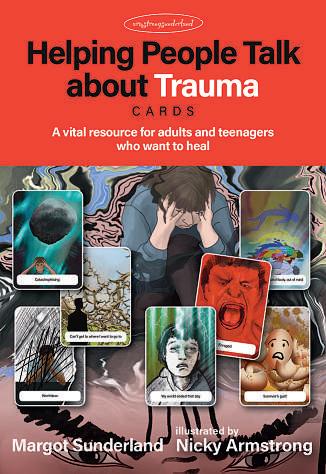




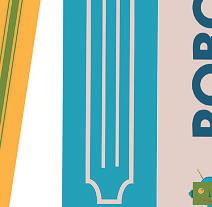






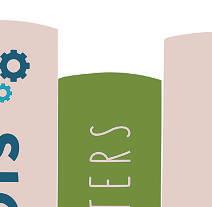







Motivation plays acrucial role when it comes to learning to read. Miriam McBreen discusses some of the methods teachers can use to boost engagement.








Onthe pathtobecoming readers, childrenneed to learncertainkey skills,like blending sounds together to decodewords or using strategies to understand text.However,this is only part of the picture –theymust also want to invest time and effort into reading and to persist when they(inevitably)encounter challenges; in other words, they mustalso be motivated to read (Fox,2009). Agrowing body of research suggests that when we think about howweteach reading, it is equally important forustoconsider how we canfoster reading motivation.

When pupils arehighlymotivated to read, theytend to spend moretimeengaging withreading, find it more enjoyable,

use more strategies,and show better comprehension (Guthrie &Wigfield, 2000; Park, 2011). Motivation also influences how effectiveremedial readinginterventionsare (Bates, d’Agostino,Gambrell &Xu, 2016), in particularunderscoringhow important it is forpupils with reading difficulties Indeed, motivationmay be especially important forthesechildren. When learning to read, all children experience difficulties, whether they’retrying to read anew word or understand acomplextext. However, these challenges areoften exacerbated for pupils with dyslexia. Repeateddifficulties can lead to feelings of shame,frustration or discouragement, making children less motivatedtoread in the future. But when children with reading difficulties aremotivated, theyare morewilling to persist and to spend time reading, even when facing setbacks. This creates more opportunities forthemto make progress, andindoing so to foster

theirconfidence and enjoyment of reading (Vollmeyer &Rheinberg, 2006).

However,for mostchildren, motivation to read tends to declineastheyprogress through school. In fact, by thetime they leave primaryschool, childrenare lesslikel to saytheyreadfor pleasureorthat they find readingimportantthanwhentheyfirst started. Howthencan we make sure we’re notjustteaching keyreadingskills, but also teachingtonurture motivation?








ly e o al f


In asystematic review and meta-analysis Irecentlyconducted with Prof. Robert Savage, examining the impact of motivational reading interventions, we found that several approaches had positive impacts on both motivation and reading. Below are some of the key areas that emerged as important.




To be motivated to read, students need to believe thatifthey invest time and effort into reading,theywill see progress. This means theyneedopportunities to buildconfidence in their readingabilities (Guthrie, McRae &Klauda, 2007)




frustrating When tasks are pitched at the right level, pupils can succeed through investing time and effort, allowing them to grow as readers while building confidence in their abilitytotackle reading tasks independently



Children also need opportunities to see that they’ve made progress. For example, helping pupils to set reading goals for themselves and to plan, monitor and evaluate how to reach these goals can help them develop better self-awareness and an understanding of both their strengths and where they need help. Meanwhile, having apersonal book library, wherethey can keep books they’ve read throughout the school year,can help them see how much they’ve grown as readers. Providingimmediate,specific and process-oriented feedback, suchas “It wasa good strategy to try and sound this newwordout, what else could you try?” also helps build confidence.Itdrawsattentionto

children’s strengths as readers and helps them developabetter awareness of tools theycan draw upon when theyget stuck.
2
.nasen.org.uk org.uk
especially interesting. Activating children’s background knowledge before they read, by asking them to think of things they already know about atopic, can emphasise why agiven book is relevant, while also anchoring their comprehension around concepts they are already familiar with.
ll A h ld learning (Kirschner,Sweller &Clark,2006)







































When children feel independent, this allows them to explore theirinterestsand to become more self-directedlearners.




When tasks are pitched at the right level, pupils can succeed through investing time and effort, allowing them to grow as readers while building confidence in their ability to tackle reading tasks independently.



strategic supportfromanadult along the way. Thiscan allow pupilstosee they cansucceed withtime, effort and targetedsupport, helping them both grow in theirreadingand see they cansucceed independently.






And oneofthe best ways to foster interest in readingistodrawupon things children already enjoyand are interested in. Providing lots of choices of books linkedto things they are curiousabout,going to the librarywith them to pick outbooks, or using fun reading games,can all allowchildrento explore theirown motivations forreading.











Key to helping pupils build confidence in theirreadingskillsand discover whythey enjoy reading is giving them opportunities to feel in controloftheir









One of the most straightforward ways to encourage autonomy is to give pupils control over aspects of the learning process by offering them choice, such as access to a range of books, enrichment activities (e.g., writing astory, painting, making avideo)or type of reading work (e.g., doing aphonics game, listening to an audiobook, reading with apeer) they canchoosefrom. This makes itmore likely both that they’ll pick something they find interesting or relevant, and that they’ll stay engaged in what they’re doing.





However,whenprovidingchoices, it’s important these areatthe right level of challengefor thechild. For example, tasks canbebrokendown into chunks, with pupils guided to complete as muchofthe task independently as possible, combined with
Finally,essential to nurturing motivation is for children to feel that they are learning in a supportive and safe environment (Patrick, Ryan &Kaplan, 2007). Compared with classrooms that are focused on performance, supportive classrooms tend to focus on students developing in line with their own personal goals, allowing them to see progress irrespective of their starting point. This is especially important for pupils with reading difficulties, who might be more likely to feel discouraged in classrooms where there is a focus on competition amongst peers.
Encouraging pupils to trymoredifficult tasks, make mistakes,learn from these through discussing them with theirteacher and peers, andset theirown personal goals can allcontributetocreating asupportive environment. Children in theseclassrooms tendtoshowmore self-regulationand to engagemore deeply in tasks, with positive effects on both their learning and wellbeing.














































Anticipating a classroom that needs to be ‘calm, orderly, safe and supportive’, as proposed by Ofsted, might make some teachers throw their hands up in horror and ima sameness, but the reality is far from th




‘Safe and supportive’ classrooms have always been necessary, so it is the‘calm and orderly’ aspect of Ofsted’sphrase and the anticipation of adumbing down of future excitement that fills some minds with dread. However, if we startto consider the meanings of the words ‘calm and orderly’ without jumping to conclusionstoo quickly, we may see that through embracing this clear expectation, classrooms will become environments for all pupils to enjoy
Acalm environment is one without anxiety, aplacewhere there is an understanding of the need to just be, and where distractions are not making it hard to eitherfocus or let go. Anatural calm environment conjures up a woodland scene, abeautiful view, or perhaps abeach with the sound of gently lapping waves. It is the antithesis of acircus scene

or fairground and ye has often been these sortsofscenarios, withcarousels of simultaneous activities, thatteachers were expected to create in classrooms If as adults, it is these cal environments that w seekout to clear our or to enable us to th issues that need unp we not think that cre our classrooms is ne

An orderly enviro actions and events are planned and anticipated. There is predictability in the routine and visuals thatsupportit, helping to avoid cognitive overload whentrying to remember thingsthat are unnecessary and enabling space for more creative thought
The rules for the environment are fair and enforced, with clear sanctions so occupants can relax without ‘whatif?’ anxieties
Nothing in the phrase ‘calm and orderly’ means an avoidance offun,orthe absenceofenjoymentand laughter They can and should exist in tandem Thedifferenceisthat more children within the ‘calm and orderly’environment will be able to experience the positive effects from the fun, enjoyment and laughter, because they will not be clouded with
MIRIAM WALKER


Miriam
area of additional needs. Her doctorate focused on perspective, understanding and relationships between teachers and autistic pupils. She provides support for schools who want to deepen their understanding of the difference of autism.



If as adults, it is these calm environments that we seek out to clear our heads or to enable us to think through issues that need unpicking, why do we not think that creating calmness in our classrooms is necessary for children?
‘ais asenior lecturer at Winchester University specialising in the BIO
anxiety from unpredictability, and stress from sensory and/or cognitive overload
































Calm and orderly environments are supportive for children’s learning, and particularly so for children who are neurodiverse and are more likely to struggle with some aspects of many mainstream classrooms.For example, a classroom with fewer visual distractions around the white board creates a better opportunity for focus on the necessary visual content of the lesson




Limiting work displays around the classroom walls and avoiding the festooning of every empty space with items hung from washing lines strung about the room, creates a calmer and more tranquil visual space.This in turnenables the opportunity to focus more easily without visual distraction every time the child looks up from their work to think A quieter environment where noise level considerations are part of the work process and factored into the lesson plan creates an outcome where independent thoughts can travel further, and problems and challenges






have the chance to be unravelled and worked on It does not mean an absence of loud noise, but rather an absence of unexpected and unnecessary loud noise

For autistic children who are particularly noise sensitive, being able to predict when something is going to be loud in the classroom gives them the opportunity to choose when to use noise cancelling headphones rather than feeling the need to wear them all of the time

In addition to the creation of ‘ a calm, orderly, safe and supportive environment’, in the same document, Ofsted states that if a school is to achieve an outstanding grade on inspection, there must be ‘structure that enables all to thrive’ No teacher would seek to consciously create anenvironment that was disturbed, disorderly,unsafeand unsupportive, and yet to autistic children, that has been theway many have described mainstream classrooms. It is accepted that there will be many hoops to jump through as education shifts over time with new initiatives that come and go But this one I hope will remain as a foundational expectation Workingwithin an environment which is conducive to all children being able to achieve their maximum potential is vital Seeking to eliminate factors that raise anxiety and minimise cognitive and sensory overload is an essential foundational teaching skill which has been under recognised and now needs to be re applied to our classrooms

Calm and orderly environments are supportive for children’s learning, and particularly so for children who are neurodiverse and are more likely to struggle with some aspects of many mainstream classrooms.
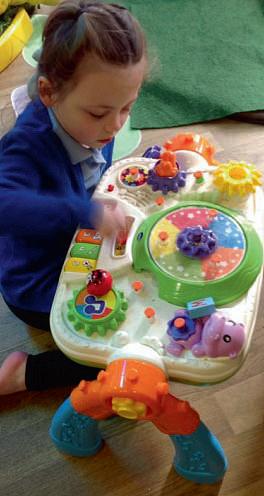
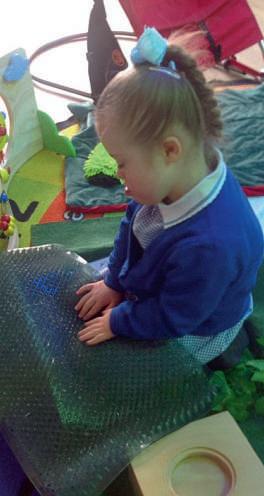



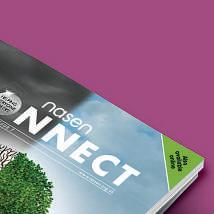



MandyWilding,EarlyYearsleader at nasen, discusses the importance of identifyingSEN, examines the role of the SENCO and key personand outlines some effective strategies andsupport forsettings.




The key person and SENCO (whether an early years SENCO or school SENCO) have different but important roles to play in the process of identifying and meeting the needs of children with SEND in the Early Years and it is important that they and senior leaders are clear about their responsibilities to children with SEND. The key person is the most important person for the child and remains so, even once the SENCO is involved. It is important that children’sneeds areassessed by the key person as early as possible to allow any special educational needs (SEN) to be identified and supported. They gather information about the child and get to know them well through their daily interactions with them and their parents/ carers. They also require agood level of understanding of ‘typical’ child development to identify where children may have a developmental delay or SEN. They should communicate any concerns they have about achild to the SENCO, who can advise and supportthem with next steps if necessary.
TheRevised Early Years Foundation Stage (EYFS) Framework (2021) states: “The key person must help ensurethatevery child’s learningand careistailoredtomeettheir individualneeds.The key person must seek to engage and supportparents and/or carers in guiding their child’sdevelopment at home Theyshouldalsohelpfamiliesengage with morespecialist support if appropriate.”
It is important for settings to find out as much as possible about all children from parents/ carers before they enter the setting. Gathering information such as their likes, dislikes, interests and friends allows them to take aperson-centred approach to planning. For children with SEND, whose needs have already been identified, it is even more important. The key person must find out as much as possible about them and parents must share information about any outside agencies that are
already involved, such as aSpeech and Language Therapy (SALT), Portage or a paediatrician. Reports and recommendations from these agencies are avaluable source of information for the setting in meeting the individual needs of the child. Some children may not have had any additional needs identified, but they may become apparent as the child settles into the setting. Assessments and observations would take place, following discussions between the key person and SENCO, to pinpoint their specific needs and take appropriate action.








Throughout the day, key person andother adults will have many interactionswith the child, whetherduring child or adult-led activities. These also give thepractitioner useful information about thechild in assessingtheir language, cognitive,social and physical needs. Practitioners may want to carry outmoreformal observations of the child to find out furtherinformation. These may take the formofnarrative,structured,


spidergraph or incidental observations, dependingonthe informationrequired (fordetails about these, see the nasen Early Years miniguides–https://bit.ly/3LZ8dkL)

Thereisnorequirement by Ofsted for practitioners to keep notes and ‘track’ every child in the setting or class, but for children with SEND it is useful to have important information to hand. Progress towards current targets, records of any interventions and meetings with parents and outside agencies that have taken place will be important at alater date if the child requires an Education, Health and Care Needs assessment (EHC needs assessment) and the school or setting needs to demonstrate what has been put into place for them.

Many settings use aone-page profile for children with SEND, which is made




Mandy Wilding is an Education Officer at nasen, where she has worked for four years. She taught in primaryschools for 32 years and held the roles of Assistant Head, SENCO and both Primaryand Secondary School Governor.She is passionate about high quality teaching and the early identification of, and provision for,the needs of all children. Contact her at MandyW@nasen.org.uk
It is important that children’s needs are assessed by the key person as early as possible.
available to all adults who work with the child. The profile usually contains important information about them such as ‘what people admire about me’, ‘how Ilike to be supported’ and ‘what makes me happy’. It is important that these profiles are updated regularly; they are particularly valuable at points of transition from room to room, setting to school or class to class, and to give the child avoice in any planning and decision-making in the provision that is put into place for them.
Once practitioners have identified an area of need for achild,theymay want to find out more information about their specific difficulties in this area, and this is where assessment tools can be helpful. It is partofthe SENCO’srole to ensure allpractitioners are aware of the assessment tools available and understand how to use them. Some are free to access such as the ‘Universally Speaking’ booklets produced by The Communication Trust but others, though at acost, can be used repeatedly and are a good investment for asetting or school
TheUniversally Speaking booklets showwhere childrenshould be with their
communication skills at any givenage.You canuse the booklets to find out whether the children you work with areonthe right track, what helps them learntotalkand listen and what to do if you have concerns about any of their communicationabilities. They cover 0-5years, 5-11 yearsand 11-18 years. The Wellcomm Early YearsToolkit(a paid-for resource, see below)enables practitioners to quickly andeasily identify children aged6 months-6years who may benefit from speech andlanguage support
The ‘Big Book of Ideas’contains play-based activities to supportchildren’sspeech, language and communicationdevelopment according to their specificneeds.
Another free checklist that practitioners may find useful is the Trafford SensoryChecklist, produced by Trafford Children’sTherapy Service. This checklist is intended to be used as atool and aguide to becoming more aware and understanding of achild’ssensory needs and differences. It includes many
of the most common sensorypreferences and differences and is divided into categories based on the sensorysystem and how the brain and nervous system may process the input. There are approaches and strategies to use for each of the categories.



It has been proven that the earlier achild’s special educational needs are identified and provided for through inclusive universal practice, reasonable adjustments, targeted provision, collaboration with parents and the graduated approach of ‘Assess, Plan, Do, Review’, the more successful the outcome for the child as they move to adulthood. This is why all leaders need to ensure that those working everyday with our youngest children, are confident and highly skilled to assess and identify achild’sneeds, voiceany concerns and act upon them promptly to put support in place.

Find out about nasen’s free membership: https://bit.ly/3EbVVmZ
Discover nasen’sfree Early Years training and resources: https://bit.ly/3SyfMB9
To find out how else nasen can support r you, contact mandyw@nasen.org.uk.
Universally Speaking, The Communication Trust (free to access): https://bit.ly/3Rz R CtDM Wellcomm Toolkit, GL Assessment: https://bit.ly/3e86kFE


Traff f ord SensoryChecklist (free to access): https://bit.ly/3C2 C ZJV3



One page profile templates (free to access): https://bit.ly/3M13yyA
nc www.nasen.org.uk
Once practitioners have identified an area of need for a child, they may want to find out more information.
In aworld of ever-increasing digital connection, it is crucial for educators to be able to ‘switch off’, says Lisa Blackett.
The title of thismagazine is ‘Connect’, so let’sthink about howweconnect, andhow we disconnect Now that educationis mostly in-person again, what is your connection like with staff, colleagues and yourself? And what is your disconnection from worklike?


These arequestions forreflection and consideration when youhave sometime and space.Questions whichmay not get answered in thedigital worldofwork.


Digital working, which wasalready encroachingonour time, wellbeing and productivity,explodedexponentially during thepandemic. Back-to-back meetings,incessant emails and internal messaging probablyhaven’teased much due to demands and habits.Disconnecting at theend of the day, wheneverthat is, has becomemoredifficult than ever
Theimpact of constantly being ‘connected’ can be damaging, both for the individual and the organisation. In order to do concentrated, deep work we need to do one thing at a time. Iknowthat may often seem absurd but










Lisa is awellbeing and leadership coach and trainer with an approach informed by neuroscience and positive psychology She has aMasters in coaching andisalso adirector at Potential in Me, aScottish social enterprise which supports young people by also working with the adults who live or work with them https://potentialin.me

it is true. People don’ttruly multi-task, especially cognitively.Wetask-switch. Avery common exampleoftask-switching is allowing notifications of any kind into our working day or checking email when we’re doing other work, such as writing areportorattending ameeting. It takes both time and cognitive resources to returntothe task at hand and we can’tget into ‘flow’, which is important for our work and also our wellbeing and life satisfaction. We don’teven have to open the email or message for our attention to be diverted as we cannot not see the notification. While we may feel productive answering emails when they come in, or responding to urgent requests, they interrupt and impact on whatever we are doing. As the late Sir Angus Grossartoften said, ‘Be careful not to confuse activitywith productivity’.
The more frequently we task-switch, the greater the drain on our cognitive resources, including creativity, decision making and memory. Memoryrequires our brain to filter for salience which becomes increasingly difficult the more external stimuli we have. Creativitydemands head space, and when our brain is overwhelmed, we are more ‘exploitative’, relying on what we know and can easily grasp, versus being ‘explorative’, using divergent, out-of-the-box thinking. Likewise, decision making becomes less effective when task-switching, in partdue to the decrease in prioritisation and salience and in partdue to cognitive fatigue. flee part due fatigue
The habit of being too digitally distracted can also harmour relationships. When you are with another person, face-to-face or remotely,and yousee theireyes flicker across the screen or they check their phone when it pings whilst you’re talking, it often feels disruptive. At best, they may have been waiting for something important that you’re aware of and it’sfine. Often though, you feel you’re not being listened to, or you’ve been deprioritised. Ihad aclient do this recently, during an online coaching session. Iasked himwhatwas going on. Washeexpecting something urgent? He wasn’t. Washis session aquiet space for him, blocked from other work? It was. He simply wasn’tfully engaged, was being inconsiderate of my presence and was caught up in the habit of constant email notifications. He has now switched them off. This was not only an example of the impact between two people but his relationship with himself, prioritising whoever might be in touch over himself, even when his time was protected. Being constantly switched on can harm our wellbeing in other ways too; the impact of notifications, emails, online meetings, etc. keeps us on our toes but also makes us feel overwhelmed with asense of so much feeling‘urgent’. This urgency can knock the autonomic nervous system out of balance, and keep us more in sympathetic mode, ready to take action at least, if not fight or flee. When we are in sympathetic
mode, cortisol is continually released, which impacts our bodies as well as our brains. This leads to further mental as well as physical fatigue. Other aspects of digital working which have anegativeimpact are lack of breaks, longer hours, digital procrastination and presenteeism. Physical discomfortcan happen as well, with back, shoulder and hand pain, headaches and eye strain common complaints of digital working.
Whilst the UK doesn’thave ‘right to disconnect’ laws in place, there is wisdom in having adisconnection practice, both as an individual and an employer.The ‘right to disconnect’ allows employees to stay within the boundaries of their paid working day in terms of engaging with work, emails and calls. Portugal has recently taken an additional step which prohibits employers from contacting employees out of working hours. Some organisations are beginning to take this more seriously and are encouraging employees to shut down after working hours and not have work email on their personal phone or during holidays. This supports better staffwellbeing as well as productivity.
Digital technology has been beneficial in many ways and is integral to our daily work and lives, so there is no suggestion to abandon it or digitally detox. This is about recognising an over-connection to devices and habits that

don’treally serve us or the organisation we work for.Devices,software and apps are very cleverly designed to hook us, and it is worth exercising agency and control in their use.
Thefirst step, as with all habits, is awareness.Thinkabout your digital behaviour andthe contextinwhichyou use technology.Try to akeeptrackofatleast oneortwo contexts to getanideaofyour usage. The more conscious you areofyour behaviour,the morecontrolyou will have.

Someactivities to considerasanindividual: Howmuchtimeare youspendingon devices/apps/email, etc.?
Howare youprioritising? What areyou not doinginstead? Howare youfeeling at the beginning/ middle/end of your day?

Some things to consider as aleader/employer: What areyour expectations for communication?
As aleader,whatisyour owndigital behaviour like?
What impact do youthink digital habits haveonyour staff andorganisation?
Withmore clarity about our digital habits, expectations and the impact on us individuallyand organisationally,we can takemore controlover how we work, enhancing performance and wellbeing
Think about your digital behaviour and the context in which you use technology.
AsIwrite this article,looking back at the data issued in the summer term, we have another new Secretary of State for Education, Gillian Keegan, our fourth in as many months. We arealso in the period of reflection for the Department for Education (DfE) on the SEND Review Green Paper consultation, which is now under the remit of Claire Coutinho MP Looking at the annual data through this lens feels more like abaseline for change. Every year the DfE publishes adata set called ‘Special Educational Needs in England’ and the ‘Education, Health and Care Plan’ data, which is based on the information obtained from the Januarycensusofthatyear, i.e. the data published in June reflects the situation in January2022. The data reflects the fact that the impact of school closures and Covid-19 are still being felt.
Whenreviewing the data,itisimportant to rememberthatitdoes notgiveusa complete picture of SENacross England; it reliesupon accurate anduptodate informationbeing entered into thecensus,
anditonlyreflects the ‘primary need’ categoryassigned to each pupil. Pupils withSEN arehighlylikely to haveneeds which cut acrossmore than oneofthese categories,sothe truepicture will be morecomplexand nuanced.Italsodoes not include pupils with SEND whoare educated at home or in post-16 education.
As with any data, caution should be taken in drawing too many conclusions. As mentioned above, it only reflects primary need and not necessarily the complexities of co-occurring needs. In the rest of this article Iwill be highlighting some of the figures around this data and posing some questions for you and your teams to contemplate: Therehas been another near10per cent increase in the number of EHC plans from 2021; nowatover470,000.What is drivingthis increase? Do theproposed changes in the SENDreview extendfar enough to makea real differenceonthe ground?
Zoe Mather,education officer at nasen, takes alook at the latest SEND data and considers some of the questions we need to ask, as well as what we can do as aresult.
More than 55 percent of pupilswith EHC plans areinmainstreameducation; does this reflect inclusive practice flourishing in mainstream settings?Ifso, why are Special Schoolsand Pupil Referral Unit intakesincreasing?
28.2 per cent of pupils in PRUs have an EHC plan, up from 24 percentin 2021.What support arePRUs able to offerpupilswithEHC plansthat mainstreamschoolsare not? Is it access to professionalsorisitsomething more fundamental withinthe school’scontrol?
SLCN remains thehighest primaryneed at 23 per cent of the total SENneeds. What trainingissupporting staff to be effectiveintheir supportofthese pupils? What morecould be done?
Therehas beenanother rise in the total numberofpupilswithSEN,with anextra 46,000 pupils identified,takingthe total to 16.6 percent; the highest proportion

increase in the number of EHC plans from 2021
since the implementation of theChildren and FamiliesAct in 2014 andthe new Code of Practice.Doesthe increasein SEN support and EHCplansreflect a decrease in provisionatthe universal support levelwithinmainstream?Isthis going to worsenwith theimpending financial crisis?
36.4per cent of pupils with SENsupport arealso on Free School Meals(FSM), compared with 22.5 percent forall pupils, and40per cent of pupils with EHCplans arealsoinreceipt of FSM. Whateffectwill the increaseincostof living haveonthose withthe most needs withinschool? What canschoolsdoto support pupils and families at this time?
Over 10,000pupilswithSEN support and12,500pupils with an EHC plan fall into the Not in Education,Employment or Training(NEET)category. Will the proposed supported internshipssupport more pupils with EHCplanstoavoid becoming NEET?How accessibleare these acrossthe country?
The total number of pupils with SEN varies across LAs from 8.8 per cent at the lowest to 23.1 per cent at the highest. The LAs in the top 70 per cent areinthe list of Education Action Areas identified by the Government foradditional investment. Will the consultation and resulting guidance around Local Area SEND reviews improve the joint working and commissioning for
children with SEND and their families? With the change in Government direction, what will happen to the proposed funding for the Education Action Areas?

The number of pupilswith an EHC plan and being electivelyhome educated rose again to over 4,000. Someofthis is attributedto emotionally-based school avoidance(EBSA).Shouldthe figuresfor this be collected?Are the newattendance reformsmore‘stickthancarrot’and will they have thedesired impact? EHCplanscompleted withinstatutory timescale has risen to 59.9 per cent. Will the reformstothe EHCplan timeline be implemented afterconsultation and will this supportpupilsand parents to access supportina more timely fashion?
Over 16,000 pupils withanEHC plan are educated outside of anursery,schoolor college placement withjustshortof5,000 awaitingprovision. Will theSENDreview’s plan to give alistofplacementsfor pupils reduce the number of those awaiting appropriate provision?




With the changeinGovernment leadership,what is the direction of travel foreducation andwhatimpactwill this haveonthe SEND review response? Looked-after childrenare over four times morelikely to haveSEN. Nowthat Will Quince MP has movedinto health &social care, willhecontinue to fight forthosewith SEND?
As the new ministers begin to engage with their portfolios across education, let’shope they hold true to the values within our Code of Practice and engage with authentic co-production with the SEND sector at all levels.


EHCP DATA: https://bit.ly/3xdsywy
SEN DATA: https://bit.ly/3D72dE6
Zoe began her career on the Graduate Teaching Programme in 2000 as asecondary maths teacher.She then furthered her practice across several secondaryschools holding roles including outreach and SENCO. Her most recent post before joining nasen, was as Assessment and Achievement Lead as part of the SLTof an autism-specific allthrough special school.
www.nasen.org.uk
Is pharmacypartofthe solution to acollaborativehealthand education service delivery model forchildren and young people in special schools? Nirusha Govender discusses.

The number of dispensed prescriptions forchildren and young people (CYP) has increased in recent years, with morechildren that need to takemedicines during school time. This can be forarange of medicalconditions including asthma, epilepsy,diabetes, attentiondeficit hyperactivity disorder (ADHD), and other morecomplexhealth conditions.


The percentage of pupils with an Education,Healthand Care(EHC)plan attending state funded special schools has seen ayear on year increase since January2010 from 38.2 per cent to 59.9 percent in January 2021. Approximately 2per cent of school-agechildren attend aspecialschool,and the vast majority haveanEHC plan





On 1September 2014, anew duty came intoforce forgoverning bodies

Section100 of the Childrenand Families Act2014 places adutyongoverning bodiesofmaintained schools, academies and pupilreferralunits (PRUs) to havein place arrangementsthat support pupils with medical conditions at their school.
Appropriateauthorities must haveregard forstatutory guidancewhencarrying outtheirstatutory duty to makesuitable arrangements to supportpupils at school with medical conditions.











Pharmacist Nirusha Govender is currently the associate director for Medicines Governance and Pharmacy Education at NHS Kent and Medway Integrated Care Board (ICB). Over the past 12 years, she has worked closely with specialist children’snursing, local authorities and special schools. Nirusha’s work with anumber of special schools in Kent focuses on medicines optimisation service provision including: training, competency assessments, quality improvement and assurance reviews and amedicines information service.

















Within the collaborative commissioning structure between the NHS and Local Authorities for special schools, there has never been aformalpathway to promote or support the need for apharmacy-led medicines optimisation service in schools. TheSEND reforms introduced by theChildren and FamiliesAct 2014 focusontwo keythemes: greater co-operation between education, healthand social care and agreater focus on outcomes. The Act, along with the comprehensive guidance in theSENDCode of Practice,outlines detailed requirements forthe planning anddeliveryofservicesfor CYP.Theyalsorequire local authorities to implement joint commissioning arrangements withtheir health partners forthe education, healthand social care of CYP. Withnostandardised approach to how this is achieved,great variations exist nationally on howthis model is being delivered.Thereare vast differences even in localisedareas,where some schools havefull collaborative working between LAs and healthpartners (primarily specialist community nursing services) andother schools havinglittle or no supportatall withthe need to fund their ownhealthprovisions.
CYP attending special schools can have recognised physical and/or mental health conditions, with many having complex health and care needs. This includes administration of medicines (sometimes off-label or unlicensed) with complex dosing regimens for some specific conditions. It may include managing acute episodes, and medicines administered via specialist devices such as intrathecal pumps, enteral feeding tubes, infusion pumps and syringe drivers. It is not arequirement for aspecial school to employ aschoolnurse, whichmeans that in many special schools, teachers and teaching assistants play asignificant role in medicines administration, storage and other healthcare related matters. In most cases these individualslackmedical or pharmaceutical experience. Parentscan worrywhen sendingtheir child to school if medicines are neededduring the school day and there can also be anxiety forstaff if theydo not feel confident in administering them. The growingevidence highlights an important need to getthe fundamentals of medicines use right in schools. A

Thereisalways asteady stream of questions arriving at nasen House and, of course, the Education Team answers them as soon as possible. But, while many of themare specific to a particular context, the answers to anumber of them could be helpful to the wider nasen membership.‘Ask the team’, provides the space toshare thesequestionsand answers. If

As therehavebeen so many changes of ministers at the DfE since September last year,doyou happen to knowwhen the SEND reviewresponse will be published?

SENCO, Birmingham
Thank youfor raising this. Theysay aweek is along time in politics but alot has happened since consultation finished back in July! The newdirector of the SEND and AP directorate at the DfE, Alison Ismail, confirmed that theyremain committed to publishing the response by the end of the calendar year

Since thepandemic we haveseenan increased numberofchildrenstruggling to maintainconcentration and attention in lessons across allyeargroups.Staffhave expressed frustration andwe want touse our INSET daytodosome planning anddevelop abankofstrategiestosupport staff withthis. Areyou awareofany strategies that could help those students with SENspecifically?




Deputy headteacher,Lincoln
ce the t f th d di t t
Ihaveaveryquietautistic girlinmy class who struggles with speaking to anyone except me and theteaching assistant. However, we observed herin the playground talking animatedly to her gloves, almost usingthemlikepuppets. Would there be anyissues,inyour experience, that would cause anegative impact from her using apuppet within the classroom?
Teacher,Whitehaven
What we knowisthatifitisgood forstudents with SENitwill be good for everybody What is vital for some is valuable for all. Getting it right for students with SEN will automatically supportmore than students with SEN. At nasen we advocate inclusion by design and providing asolution for one and extending to many will supportpupils, diagnosed and undiagnosed, to access the learning.
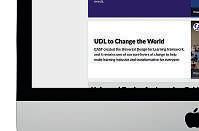

One example of how to do this can be found in CAST’sUniversal Design for Learning principles (UDL). The three main guidelines are around developing multiple means of engagement, representation and action and expression.

If pupils have their needs considered at the start of the planning process, they will be more likely to engage and give the activity the attention that they seemingly lack. The guidelines are split into 27 areas for supportwith interactive links to support. There is agreat planning tool that will help stafftoconsider changes to their teaching to supportthose pupils to engage.
An article on this verytopicfeatured in the July edition of Connect.The piece featuresa storyofa young autisticboy whoeffectivelycommunicated with everyone through apuppet. It helpedhim to separate the voice from himself and gave him confidence to speak.You didn’t state whichyear group thechildisin, but the only negativecouldbethe possible impact from other pupils’ commentsand reaction. This must be consideredvery carefullyasbelonging is such acrucialpart of successful attendanceand academic engagement. Perhaps there could be a session in which allpupils design apuppet anduse this to communicate, which will introduce thisasanoptionfor yourclass. It may also help other children, whose needsmightnot be as obvious, to develop theirconfidence. Modellingthis yourself wouldalso be agood starting point. To read the articleonthistopic, checkthe July edition on our website.
https://bit.ly/3LrZBTf nasen Connect, July edition
This is atruly magnificent piece of writing from two of the greats in education over the last 30 years.
Brighouse and Waters have extensiveexperience of howthe educationsystem works(and doesn’t).Through interviews with avariety of keyfigures in education past, present and hopefully future, theyhavesensitively, and with clarity,addressed the many issues surrounding howwegot to this point.
Iconfess to beingdisheartened at the weight of thebook,but onceI opened it, Ionly put it down to givemywristsa well-deserved rest. Thebookstartsfromthe 1976 reforms andpresents the history of education in England, taking youthroughtohow we arrived
at the current system with itsplethoraofexams, accountability, andover-centralisation.
Early in the book, one of the values they extol is that achievements should be recognised in ways that arehelpful to the pupil and their future, “with this being separate from the accountability arrangements forour schools”. This change alone could see inclusion skyrocket in the secondary sector.Self-regulation is discussed as being avitalaspect of growing up and howadolescence impacts this. Our school system needs to be able to support this but anyone looking at the exclusion figures and the dramatic increase around puberty will recognise the current limitations. With insight from best practice examples from the pastand present,
Publisher: Crown House Publishing ISBN: 978-178583586-5
Reviewed by: Zoe Mather, education officer at nasen
insightful comments from avariety of education professionals and their own common-sense approach, Iguarantee thisbook will haveyou demanding their “six foundation stones and 39 steps to success” become policy.




Chris Dyson was compelled to write this book when his school was inundated with visitors wanting to find out more about the school and its journey to outstanding. Chris invites youtoshare his journey of school improvement and this readerhappilytook up that invitation.
Author: Chris Dyson
Publisher: Crown House Publishing
ISBN: 978-1785836008
Price: £14.99
Reviewed by: Shona Randle, recently retired headteacher of an inclusive primaryschool
The foreword has agreatstory demonstrating the focus on the deep care the adults have for the children which makes the Parklands magic. Each chapter carefully unpicksall thecomplex elements that makeaschool and explains the Parklands way to do it by carefully summarising the Parklands fundamentals for each element.SENDisnot ahuge section nordiscussed in any detail.Rightly so, as Parklands hasinclusion in action, with each child valued and supported to achieve in theirown way.The passion
and lovethat Chris has in abundance comes shining through to the reader Chris succinctly describes the time when the school and anew headteacher are alignedand then theintangible magic begins to happen. Thiscouldbea handbook for new school leaders, with lists of resources, contacts and strategies interwoven throughout the narrative Chris guidesusonhow to successfully handle local/national media and social media platforms. He alsoexplains hiswaysfor engaging companies to improve funding streams and howthat fundingisused forthe benefit of the children. Not all school leaders are made in the same mould as Chris, but they will enjoy readingand celebrating thededication of the staffatParklands in improving children’soutcomes.
The ‘shortand sweet’aspect; Ten MinuteBox can fiteasilyinto busy schedulesand thepupils enjoyed thatthe activities aren’ttoo long so it seemseasiertoget through. Being givenword listsand sentences for writing meant thatI didn’thave to make them up myself; this was agreat timesaver Easy,concise record keeping system.




To findout more, www.fiveminutebox.co.uk/ product/ten-minute-box/









Advertisedage range: Y2 (6 years old) through to secon Skills/curriculum areas: literacy–reading andwriting (pho Trialledby: Karen Earl, SENCO and specialist teacher Setting: Micklefield School, Reiga
ndary honics) a
Overview: TenMinute Box, amultisensoryphonics intervention,isanew product which helps pupils to: learn and retain 50 digraphs read and write the digraph families in isolation, wordsand sentences improveself-confidence by familiarising pupils with wordscontaining digraphs across the curriculum improvepupils’ independence in learning through them being responsible forthe use of the contents of the box improveattention with short, targeted lessons that followaroutine consolidate learning and transfer to long term memory through frequent repetition.
It also enables educators to track areas of need that may point to unidentified Specific Learning Difficulties.

All of the resources needed to teach are in an appealing portable case. The lesson plans are clear and concise and designed for any member of stafftoimplement. The simple Instruction Manual makes it easy for stafftoget started usingthe TenMinute Box. Additional training is available but is not essential. The TenMinute Box also includes pre and post assessments as well as easy to use tracking sheets, which enables monitoring of progress.





The children that used the box enjoyed doing so, particularly as the activities were time limited and the routine meant that they always knew what was coming next and so were prepared. Iused TenMinute Box with
nc www.nasen.org.uk
tw k u o
two pupils. After four weeks, one of them knew 50 per cent of the digraphs that were unknown before using the resource, and the other pupil knew 70 per cent. In addition to this, both pupils began to see patterns between words and were able to think more creatively regarding how to remember certain spelling patterns.
Moving forward Iwill continue to use TenMinuteBox because as well as being effective, the shortamountoftime required means that it is an efficient intervention to use with anumber of children.
Wednesday 23 November 2022, 09:30 -15:30
While aimed specifically at those working with and supporting dyslexic individuals with learning to read, the content of this programme will assist anyone who is involved in teaching reading to improve their skills and knowledge.
To book: https://bit.ly/3PGpLmN Cost: £120
Gain insights on the role of SENCOs and SEND leaders in supporting the deliveryof outstanding SEND teaching and support
To register interest: https:// bit.ly/3RUlbS7
University of East London
Unmute now!: How to make surewehear the voices of people who receivecareand support.
Thursday 2February, 11.00-12.30 Online
We explore digital approaches that can be used to amplify the voice of people who receive care and support. Communication experts will share strategies and technologies that can be integrated into your existing processes, offering new ways to capture the thoughts, feelings and aspirations of people we support.

To register: https://bit.ly/3RRfzrH
Cost: Free

NurseryWorld Show 2023
3-4 February2023
Business Design Centre, London
To register: https://bit.ly/3yy61uM Registration free. CPD sessions can be booked and paid for online.
BETTShow 2023
29-30 March 2023
ExCeL, London
On-time registration for Bettends on 3March 2023 and is FREE. Late registration (4 March 2023 onwards) tickets will incur a£25 fee. To get afree ticket, simply register on or before 3March. To register: https://bit.ly/3ExOh6D
Early Years Seminar: ‘Assess, Plan, Do, Review, It’s the only way through!’ Thursday 9February2023, 9.30 -12.30 Online
This DfE funded seminar is FREE to attend and is aimed at Early Years and SEND practitioners, SENCOs and managers and Local Authority Teams from across England. The conference includes akeynote from Annamarie Hassall, nasen’sCEO, and three local authority presentations. Cost: Free To book: https://bit.ly/3Tbu2At






















